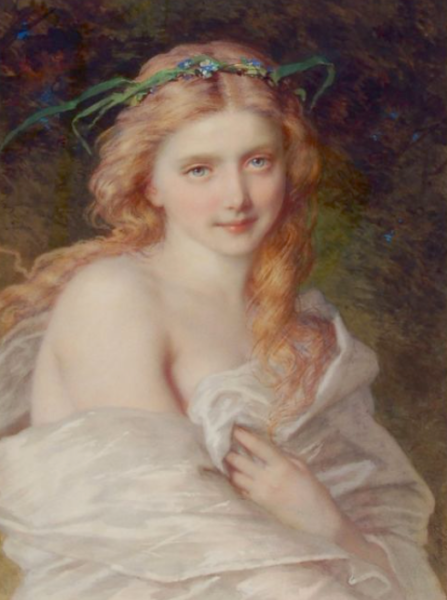Rarely does one see a work of such exquisite beauty as this ‘tour de force’ of watercolor painting. Executed in 1869 we see the artist, Guido Bach, at the height of his powers. He was born in Annaberg near Dresden, Germany in 1828 and as a young man enrolled at the academy of Dresden to study painting. Here he came under the influence of the painter Julis Huesbner who instilled within the young Bach a love of figurative painting. Although initially working in oils, he found watercolors to be more conducive for his delicate genre pieces and turned his attention to painting works on paper. In 1862 he left Germany for England, settling in London where he established a studio. The British public was much keener on watercolor painting than their German counterparts and Bach soon found an eager audience for his work. Within three years of his arrival in England he was made an Associate Member of the New Society of Painter in Watercolours and in 1868 was honored with Full Membership. In 1866 he exhibited for the first time at the British Institution and a few years later commenced showing his work at the Royal Academy of Arts.
Guido Bach had an extraordinary talent for painting in watercolors. Using thin transparent layers of paint he builds-up the image producing a softness and inner light that is quite remarkable. It is clear that he would have been familiar with the works of the pre-Raphaelites as the technique he employed, and the subjects he painted, owe much to their influence. In 1876 he visited Egypt and as a result of his stay in Cairo he produced a series of Orientalist works which were exhibited upon his return to England.
Guido Bach enjoyed a long and illustrious career, dying in London in 1905. His works today can be seen in London in collection of the British Museum.
Lit; E. Benezit
C. Wood
H. Mallalieu

